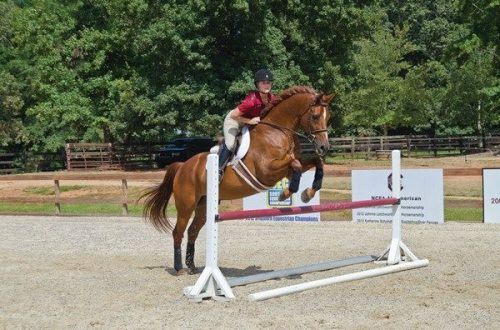
Basic training for a young horse
Basic training for a young horse
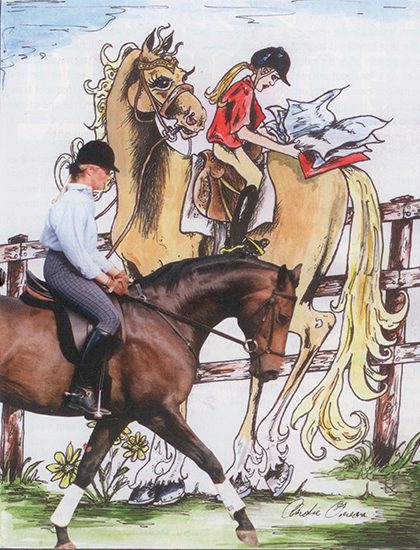
Unfortunately, the horse does not have a manual for use, it does not come with instructions. Many trainers, not to mention ordinary riders, do not have sufficient knowledge about the problems of basic training for young horses, however, when starting to work with a young horse, the principles and goals of its training must be known and, most importantly, understood.
Often, riders or breeders try to train a young horse on their own, without resorting to the help of experts, counting, however, on a positive result and further sporting success of the horse. But do they know what to do and why?
I am very grateful to Steken, the former director of the Westphalian Equestrian School in Münster, who once shared with me invaluable knowledge that he had learned during his work with cavalry reserve (repair) horses. Even 30 years ago, the term “repair” was applicable to refer to a young horse in principle. Unfortunately, this word has been forgotten and is now rarely used. Today we call a young horse an animal of indeterminate age – from weaned to a six-year-old competing in a tournament. But the term “remounts” was used to refer to a horse that was in the initial two years of training as a riding horse and needed specific training. The main thing in it is the presence of clearly defined goals (“Only those who have goals will find ways to achieve them”).
Sounds simple, doesn’t it? But the reality is that too many riders don’t see their goals. When they hire a young horse, they either have too high expectations or they ask too much, too quickly.
Meanwhile, repair horses in the cavalry, before becoming full-fledged riding horses, underwent two years of basic training. For today’s young horses, this has become a luxury. And it’s not just that our sport infects us with a desire for quick success and money, it’s our personal over-ambition that can be detrimental to the health of a young horse.
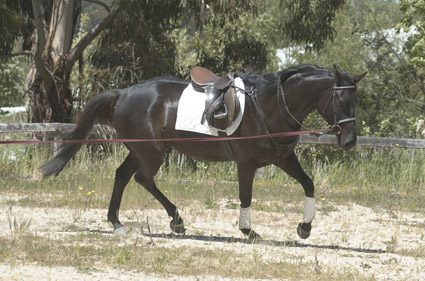
A young horse has a natural balance and movement that must be maintained even when he is under the saddle.
A private horse owner working on his own horse is common in Germany. Such a rider may not use the services of a coach or handler at all. In addition, this usually implies … the absence of other horses nearby, which would give the young horse a sense of security and comfort. Yes, during work, the horse should not follow the leader of the herd, but does it cease to be a herd animal?
In order to achieve one big goal, the rider must first achieve many small ones. Each next step is a continuation of the previous one. Only by gradually “going up” can the rider realize that he is on the right track. Sooner or later, the rider will fall from the “training ladder” with missing or poorly put together steps – the whole system will fall apart. So in school, a student will not be able to move to the next class if he fails the exams.
So, what should we understand when starting to train a young (repair) horse? These goals are simple, but they can only be achieved through daily routine work, constant repetition.
Learning begins with familiarization. We must firmly know and remember that the horse, by its physiology, by nature, is not adapted to bear the weight of the rider. Therefore, the first thing we must teach it, taking it to work under the horseback, is to accustom the rider to the weight. This horse will take time.
It is better to train five times a week for 10-20 minutes than three times a week for half an hour – the horse may develop muscle pain that does not subside for a long time. Of particular importance for horses at this stage of training is the opportunity to enjoy free movement during the run, which should be as long as possible!
In Germany, after the first ride, repair horses continued to be lunged regularly until a certain amount of trust was established between them and the trainers. Only after that did the free ride begin.
When working with nervous and restless horses, as well as horses that do not want to move forward, it was recommended to use a lead horse – this makes it easier for the horse to understand what is required of him.
What should be achieved from a repair horse? Ability to move forward at a walk and trot, canter rises and short canter reprises – straight and forward along the long wall of the working parade ground. We need the horse to learn to react to the leg and stop at the voice command, backed up by very light pressure from the snaffle on the mouth. The rider must not use spurs, but may carry a short whip to duplicate the aids (it is acceptable to lightly touch the horse’s shoulder with the whip). To teach the horse to understand the commands of the rider, his means of control and follow them slowly but surely. Don’t skimp on praise and positive reinforcement, building trust is the foundation, but don’t forget about perseverance. You must show the horse that you will not back down from your demands, inspire him with respect for yourself and for the person in principle.
One of the most important lessons that a repair horse learns at the very beginning of training is to walk on a long or even thrown rein with a rider on his back. Such a step relaxes the horse not only physically, but also mentally. Provided that suitable areas are available, free walking should be available to any horse! We also note that if the horse is not given free range, then you simply must give it the opportunity to walk for a long time on a free rein.
Fundamentals of the Basics: Rhythm, Relaxation and Contact
During the first months of training a young horse, you need to get him to maintain the rhythm of movement, looseness (relaxation under the saddle) and try to establish contact with the mouth. Contact with the mouth is of particular importance: if the horse shortens the frame or resists in the neck and poll, he becomes enslaved in the third vertebra and back, loses the ability to take wide steps and move on the bit. As a result, from the very beginning we get jerky movements, an indistinct rhythm, the horse stands in front of the rein or lies down in the hand, shows general discontent and resistance.
A horse that has just begun training should be worked with light contact but no control of the neck. The horse needs a neck to maintain balance.
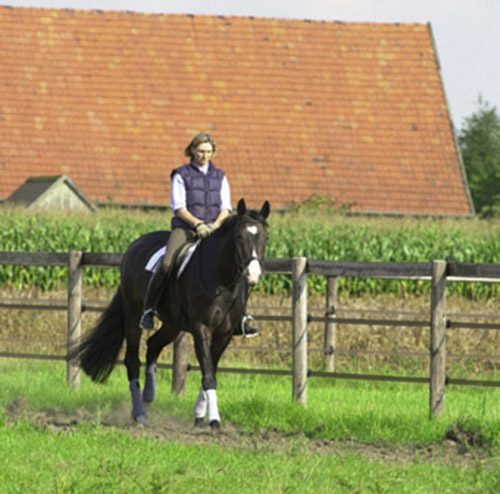
The initial phase of training requires a rider with an independent posture, stable hands, able to freely and gently use the controls.
After the first phase (work at the walk) the second phase begins – work at the trot with very light contact with the horse’s mouth. It is very important that the rider be able to find the most suitable basic pace for each horse – the pace at which the horse will move forward in a balanced and willing manner, without rushing or slowing down.
If the horse is pushing or being lazy, then this indicates that he is not relaxed. Relaxation, balance and (eventually) contact can be improved by making frequent transitions between gaits, especially between trot and canter. It will also be useful to ride with a slight change in pace or direction.
During the first month, work in straight lines, along the walls of the arena, perform large radius turns, large circles. By as your balance improves, move on to riding serpentines of various shapes – this will improve the skills of the horse and help him begin to bend in the body.
A young horse should be worked predominantly at the posting trot, as prolonged work at the training trot can stiffen his back, but short repetitions of the training trot will benefit the back muscles. It will also be useful for the back to work at a canter in a light or even jump landing.
As the horse’s confidence in the rider grows and his fitness improves (after a few months), you can start working on the first exercises on lateral movements – introduce the horse to side-shifting aids. At first, only at a walk, then, as confidence grows, at a trot.
Further, half-halts can be used for more noticeable control of the neck, at trot-walk, trot-canter transitions and when lengthening strides at trot and canter. It is important not to shorten the horse’s neck. You must understand that the rider is moving the horse from the hindquarters to the reins, not the other way around! Made? Final of the first stage.
During each training session, the readiness of the horse to reach forward is checked. You give the horse a lead and he must follow it forward and down. This exercise is performed both during the lesson (a couple of times) and at the end. If you are able to give the horse the full length of the rein, holding it by the buckle in the middle, then you can congratulate yourself – the work was done on the “5”!
The first goal of basic training is achieved if the horse understands and accepts pushing aids, gentle stopping aids, and shows a willingness to reach forward at any time. It doesn’t sound impressive, but trust me, it’s a huge step in the right direction!
Consider young repair horses. After six months of training, they should be able to work on a free rein at a canter in a group of six horses!
Don’t Forget Diversity. Even if the previous information was mainly about basic dressage training, trail riding and jumping over small obstacles will be good for any horse. Often the training of future dressage horses is terribly monotonous and boring. Connect fantasy! Bareback work, free jumping, cavaletti gymnastics and jumping over small obstacles will never hurt a horse, as will trail and nature walks and cross-country riding.
Variety will have a positive effect on the mental state of the horse, its self-confidence. In addition, such exercises will be useful for her physical form. Often, the higher risk of injury is put forward as an argument against such work, but the horse is not a greenhouse animal. It must be able to work on different soils and in different conditions. By gradually accustoming the horse to this, you minimize the risk of potential injury.
Are you on the right track? “I will only find my way if I know where I want to go.”
This wisdom can be applied to the basic training of your young horse. Not only the big picture is important, but also small steps. Take a closer look at them and you will understand if you are on the right track.
Check yourself:
1. The horse works well on the lunge in both directions.
2. The horse stands still when you tighten the girth, sit down and pull the girth out of the saddle.
3. You can start your workout by walking on a long or even loose rein.
4. At the walk, the horse relaxes the neck, nods its head smoothly during the walk.
5. The horse is constantly ahead of the controls and trots, showing a desire to move forward after you pick up the reins.
6. Can you speed up at a trot or canter at any time?
7. Can you calmly sit at a normal trot pace so that the horse stays relaxed and works his back?
8. Can you stay in contact with the horse without having to ride the reins too hard or too soft? Can you feel the horse’s mouth evenly on the left and right reins?
9. Does the horse chew the snaffle in a calm manner?
10. Can you get a horse into a canter with either leg? Does she maintain a steady pace?
11. Does the horse pull forward and down when you release the reins, does it keep pace?
12. Can you do big circles or serpentines without the horse losing balance?
13. Does your horse follow an experienced lead horse calmly when riding outside the arena?
14. Have you noticed any changes in your horse? Have more muscles appeared in the upper part of the neck, have the muscles in the back become stronger?
If you answered yes to most of the above questions, you are on the right track. Under ideal conditions, this first stage should be completed in 4-6 months. But don’t lose patience if you need more time. Taking the second step before completing the first is a big mistake!
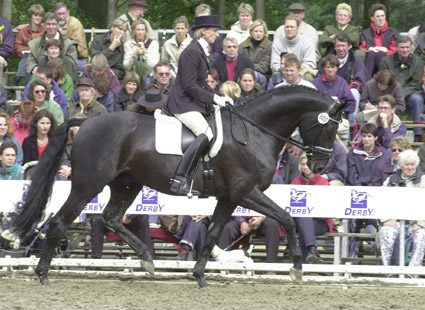
Susan Misner (source); translation by Valeria Smirnova.



